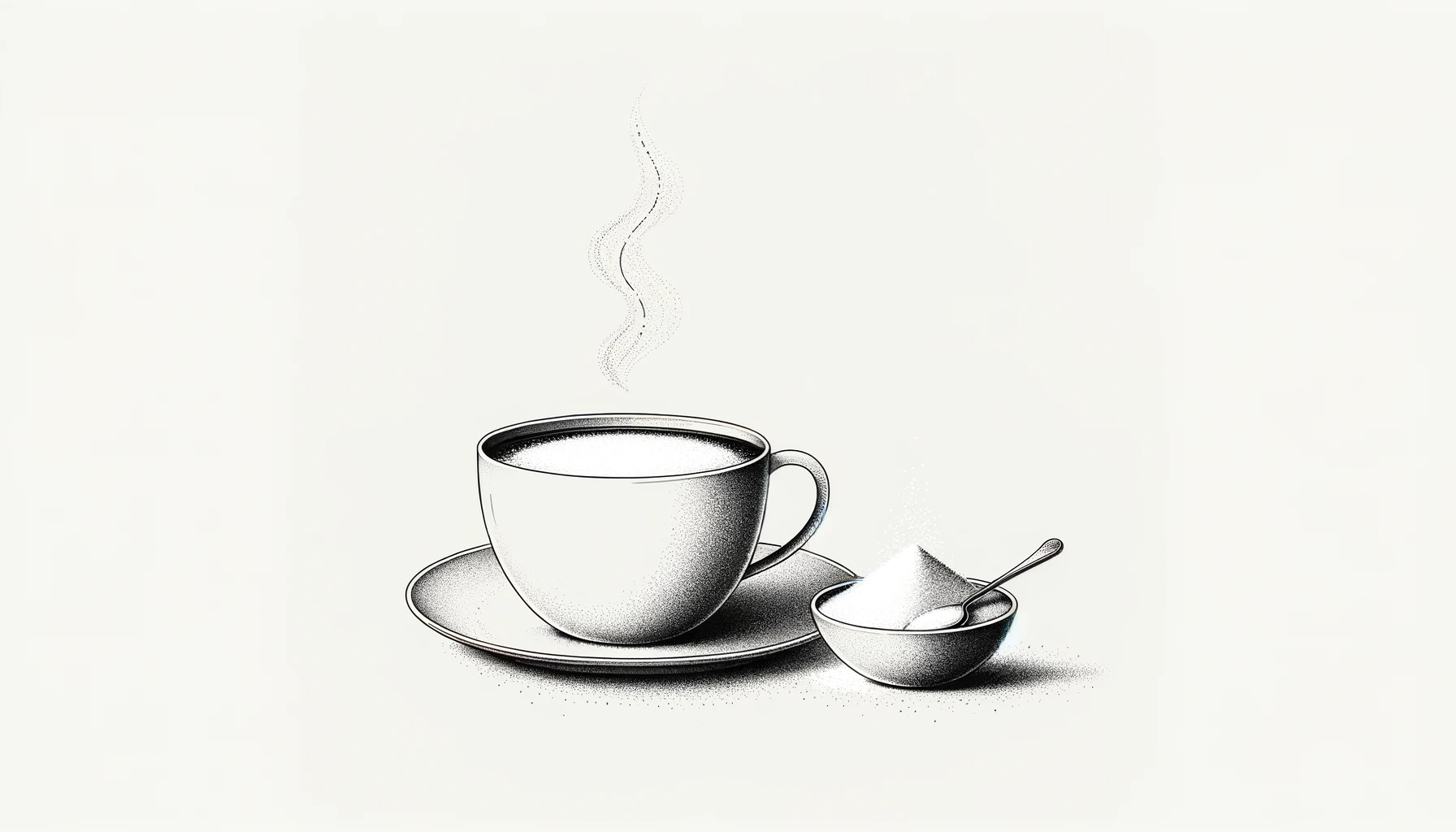Introduction
Picture this: a quiet morning, the aroma of freshly brewed coffee fills the air, and you reach out for the sugar only to find you’re out of your regular granulated sugar. But there’s powdered sugar in the pantry. Can this confectioner’s delight be a substitute for your coffee? Let’s explore this sweet query.
Understanding Powdered Sugar
Definition and Composition
Powdered sugar, also known as confectioner’s sugar, is granulated sugar ground into a fine powder. Often, a small amount of anti-caking agent like cornstarch is added to prevent clumping. This unique composition offers a different texture and dissolving pattern compared to regular sugar.
Comparison with Regular Sugar
In comparison to regular sugar, powdered sugar dissolves more quickly due to its fine texture. This can be a boon for those who dislike the grainy texture of undissolved sugar in their coffee. However, the added cornstarch in powdered sugar might slightly alter the coffee’s flavor.
The Role of Sugar in Coffee
Taste Enhancement
Sugar plays a pivotal role in balancing the bitterness of coffee. It’s not just about making the coffee sweet; it’s about enhancing the depth of the coffee’s natural flavors.
Texture and Solubility Considerations
The solubility of sugar affects the final texture of the coffee. Powdered sugar, with its fine particles, creates a smoother texture as it dissolves rapidly, leaving no gritty residue.
Using Powdered Sugar in Coffee
Pros and Cons
Pros include quicker dissolution and a smoother texture. However, the cons are the potential alteration in flavor due to the cornstarch and the possibility of over-sweetening due to its fine texture.
How it Affects Flavor
Powdered sugar can impart a slightly different flavor profile, often making the coffee taste milder and smoother.
Impact on Coffee’s Texture
The coffee becomes silkier and smoother, which can be a delightful experience for those who prefer a creamier texture in their coffee.
Health Considerations
Caloric Content Comparison
Powdered sugar has a similar caloric content to granulated sugar. However, due to its fine texture, it’s easy to use more than intended, potentially increasing calorie intake.
Dietary Implications
For those monitoring their sugar intake, it’s important to consider the added cornstarch in powdered sugar, which can affect blood sugar levels differently than regular sugar.
Alternative Sweeteners
Natural Alternatives
Options like honey, agave nectar, or maple syrup can offer unique flavors and are healthier alternatives.
Artificial Sweeteners
For those looking to cut down on calories, artificial sweeteners can be a viable option, though they come with their own set of health considerations.
Expert Opinions
Baristas’ Take on Powdered Sugar
Many baristas might recommend sticking to regular sugar or syrup for consistency in flavor, but some appreciate the creativity of using powdered sugar.
Nutritionists’ Views
Nutritionists generally advise moderation when it comes to any form of sugar, emphasizing the importance of a balanced diet.
DIY Coffee Recipes with Powdered Sugar
Simple Recipe Ideas
Try adding a teaspoon of powdered sugar to your regular coffee for a subtle sweetness and smooth texture.
Creative Variations
Experiment with powdered sugar in iced coffee recipes or in making homemade coffee syrups.
Frequently Asked Questions
- Can powdered sugar replace granulated sugar in all coffee recipes?
- Is there a significant taste difference when using powdered sugar?
- How does powdered sugar affect the calorie count of my coffee?
- Can people with diabetes use powdered sugar in coffee?
- Are there any coffee drinks where powdered sugar is preferred?
Conclusion
In conclusion, using powdered sugar in coffee can be a delightful twist for those who enjoy a smoother, slightly milder sweetener in their coffee. While it’s not a perfect substitute for granulated sugar, it offers an interesting variation for coffee enthusiasts. Remember, the key is moderation and personal preference.


Leave a Reply